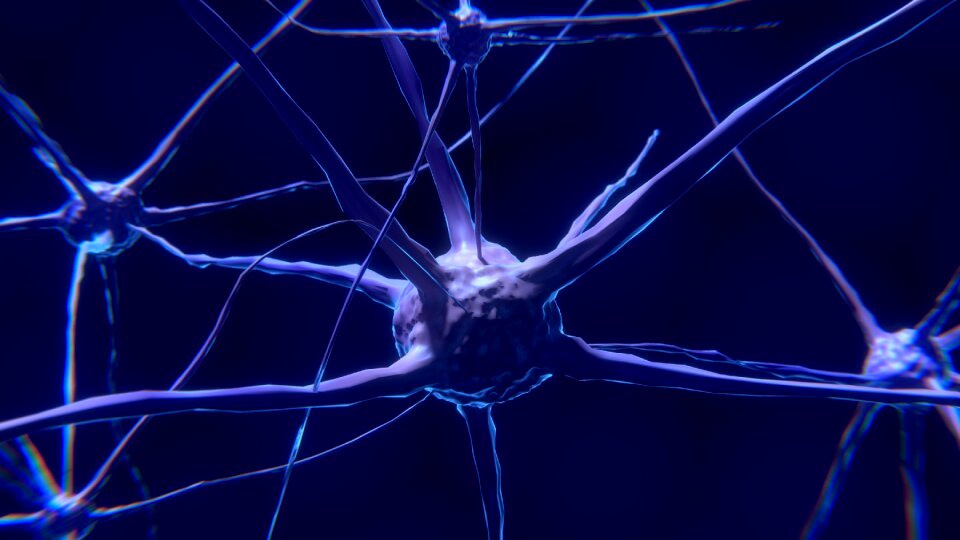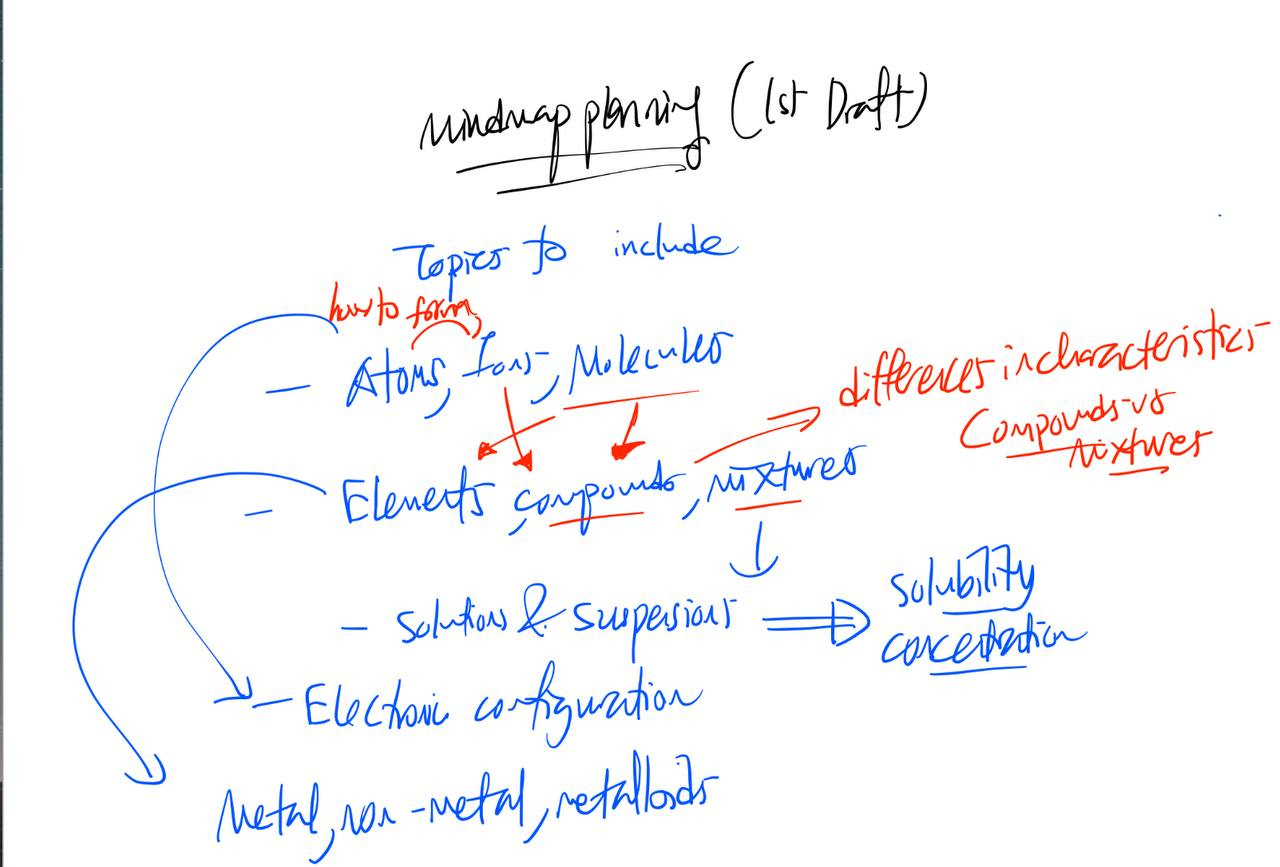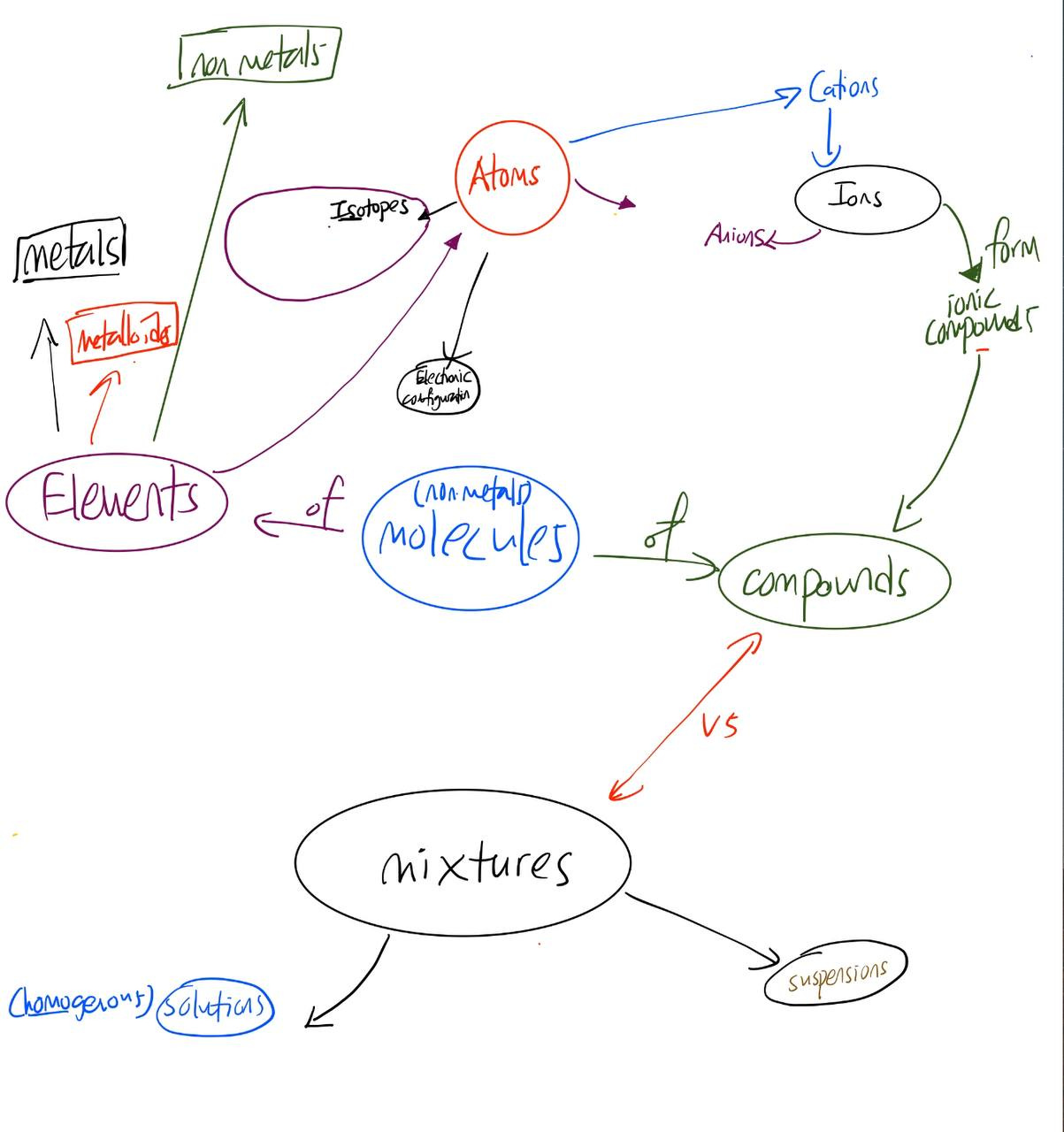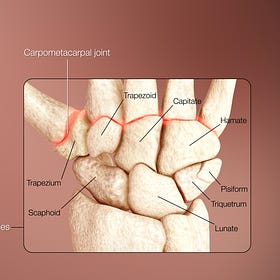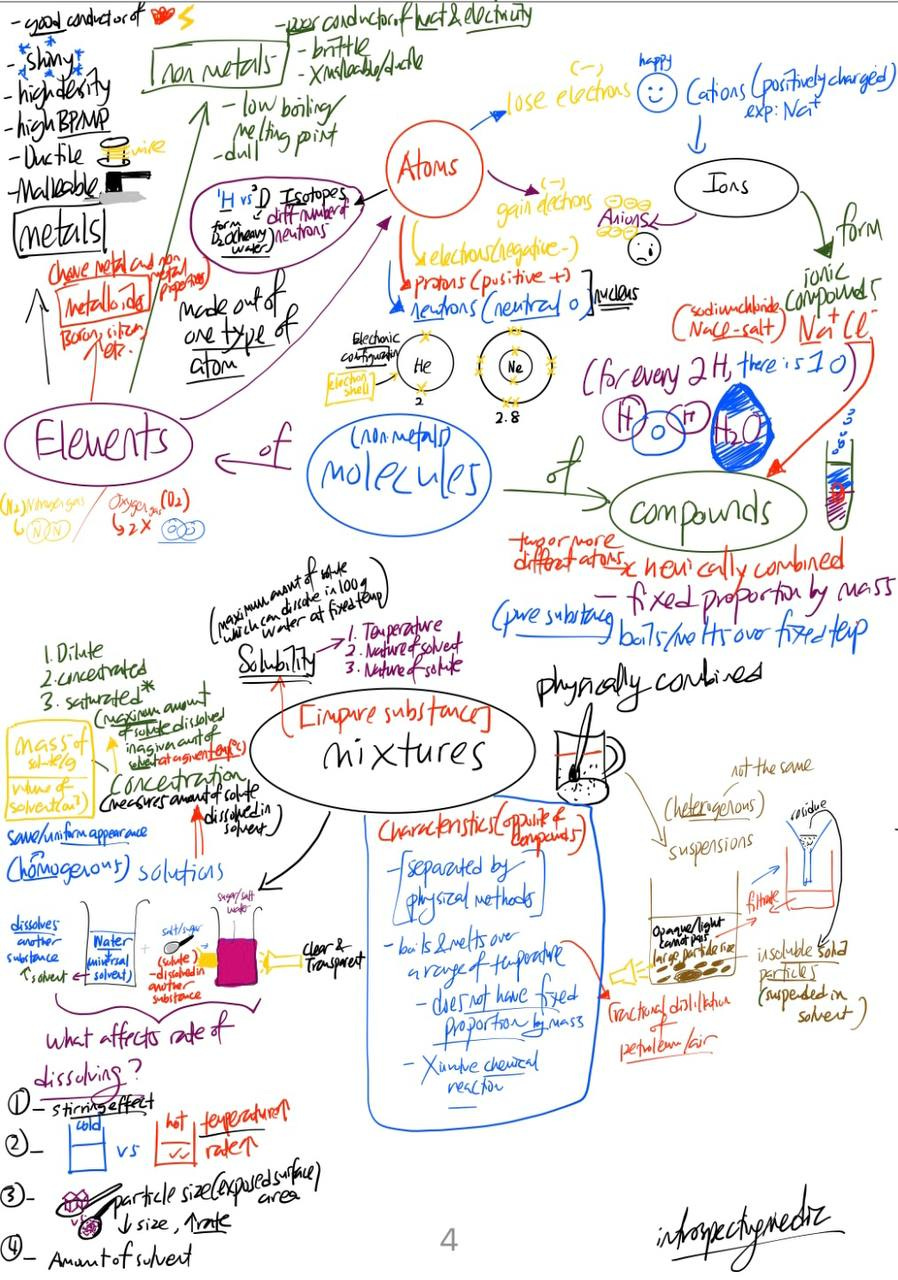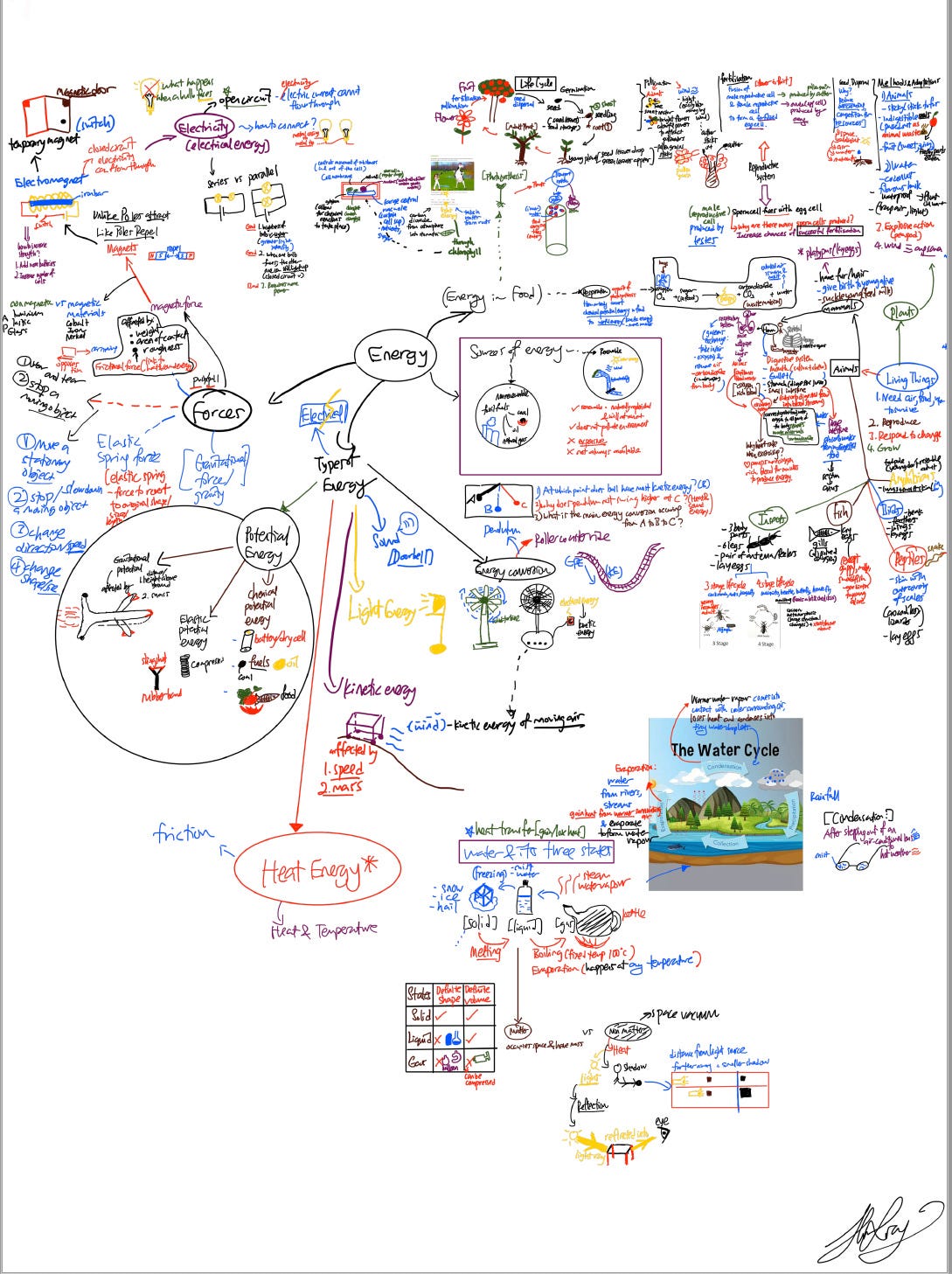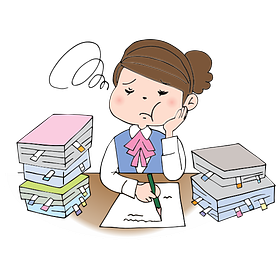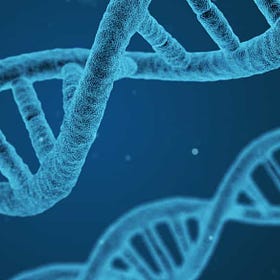Using Mind Maps for Primary & Secondary School Science Learning
In learning you will teach, in teaching you will learn.
~ Phil Collins
This post is published on my Wordpress site now. Check out the updated version here!
In this article, I shall talk about how we can use mind maps to better enhance our learning.
Mind Maps/Spider Web diagrams are a good way to consolidate pre-existing information, and I think it also serves as a platform for you to properly organise your thoughts, not in a linear fashion, but to bring your various learning insights into an interconnected web.
I like to imagine that developing those conceptual connections on paper/in your mind-map is analogous to a neuron firing off/branching out to form a new neural connection. 😛
Without further ado, I shall demonstrate how I use concept maps to connect the dots between different topics in the Lower Secondary Science Chemistry Syllabus.
Table of Contents:
Here are a few tips and steps to utilise Mind Maps for your own learning:
Step One of Mind Map Creation: Consolidate information that you have learnt into broad keywords first.
This step is sometimes optional, but I think it gives you a rough overview of what you wish to include - your overarching themes and concepts within your mind maps, and how you wish to position your main bubbles. Brainstorm what concepts you wish to connect together, just jot down some ideas you can think of about the topics in similar words.
In this context, I am constructing a mind map to summarise three lower secondary science (chemistry) topics together:
Atoms, Ions, & Molecules
Elements, Compounds & Mixtures
Solutions & Suspension
Step Two for Mind Map Creation: Start Branching Out Your Concepts
Incorporate the different topics together, starting from the big keyword first. If you are using it as a form of revision, do it without referring to your school/textbook resources first. Try to actively recall as much information as you can, and you should at least be able to get a rough outline/skeleton of your end product.
Step Three for Mind Map Creation: Identify Gaps in Knowledge
One of the key takeaways from making mind maps is an acute realisation & awareness of your gaps in knowledge and/or conceptual misunderstandings. Through trial and error, you can identify those areas of weakness and fill in the gaps, helping you to internalise as you seek to connect the information you might have missed out to information you already have a good foundational understanding of.
Make it a product of YOUR own imagination
That being said, your aim should be to summarise the information into key points that are easily digestible for you, instead of regurgitating all the information one by one. So, feel free to include your own analogies, diagrams that you found helped you to understand the concept better. Throw in some mnemonics that you may have picked up along the way, instead of writing out definitions in full.
Here is an article of how you can utilise mnemonics in your daily learning:
Review your understanding as you learn
One of the good things about mind maps is that you can constantly review new information and try to make sense of it, in relation to some of the foundational concepts you have previously touched upon. Essentially, you are building on the foundation that you have already created yourself, and slowly piecing the information together. From there, you can update your spider web to include more branches, instead of looking at new information in isolation.
The more interconnected your web becomes, the more you are creating those neural connections in your brain, encoding the different concepts into memory which you can then retrieve at a later date.
Download: Primary School Science MindMap
This is a preview of a Science Mind Map that I have curated to consolidate most of the factual information learnt at primary school level and to seamlessly connect the dots, which I found meaningful to do, and useful to engage my students when learning to identify concepts in various questions.
Personal Reflections:
It has been about half a year since I started off as a tutor, learning the ropes of not just how to teach, but also how to learn.
Venturing into the field of education, I realised that studying in school is a process where we learn to explore our own inclinations towards different learning methods in picking up new information and being able to consolidate all the knowledge with our own unique methods.
When I first started off, it was all new and engaging, the challenge of breaking down information and explaining concepts in a concise manner was rather stimulating for me. A few sessions in, I started to have a lingering doubt. There were some key ideas that I have explained multiple times, but it was disappointing to see some mistakes being repeated. In hindsight, it was something that should be seen as acceptable, as it is perfectly fine to fail and it definitely takes time for information to be fully encoded or retained, but it did bring me greater insight in how we can learn more efficiently.
Stepping in the shoes of a young learner, I considered how challenging it would be for them to piece all the information they are learning (turning gibberish and the complex jargons into understandable bite-size information), just like how daunting it might seem to flip open a textbook to be overwhelmed by all the new terminologies, or even when learning a new skill like coding.
In this day and age, as we are bombarded by stimuli - from eye-catching youtube shorts to TikTok reels that constantly snatch our attention and become distractions which compromises our ability to retain information that we need - be it to pass academic tests in school, to obtain certification for a course, to learn a new skill, to obtain and retain relevant skills for our future career paths and job scopes, etc.
Undeniably, it can be rather draining to constantly force-feed information down our throats just to get the job done. Instead of that, we can experiment with making our learning more engaging and fruitful, to better encode information.
Concluding Remarks
All in all, I believe that by reflecting on how we have learnt in the past & taking the time to connect the dots (from a foundational level) helps us to formulate a big-picture mental framework, which is crucial for higher-order learning and a well-rounded understanding of concepts.
Happy reading ~
Disclaimer: I am not a professional in learning/teaching, but I do hope that these small snippets of my personal experiences can provide motivation to any of you who happened to chance upon this page. Have a great day ahead 🙂
Here are some other articles I did regarding learning techniques:





